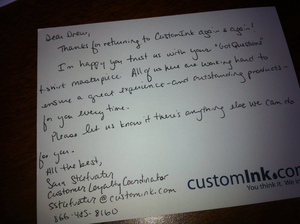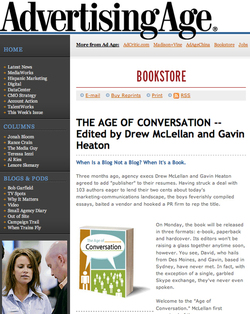What should you buy from a social media savvy agency?
August 5, 2011

…buy the right help from the right agency
Okay…the other day I blew a fuse about social media consultants selling smoke screens and mirrors. (read my rant here)
Which of course begs the question — what SHOULD you buy from someone who actually has an expertise in melding social media into the rest of your marketing efforts? (And yes…at MMG we do all of this but so do many other qualified and competent consultants)
Strategy: Whether you’re pretty familiar with all things social or you don’t know your Facebook page from your Facebook status — it helps to have an outsider help you think through your strategy.
They’ll ask questions to get you really thinking about WHY you’re investing resources into social media and WHAT goals/results matter to your organization.
Measurements: A good social media strategist will help you determine WHAT to measure and HOW to measure what matters.
While social media serves up things to count, they don’t always count, if you know what I mean. That you have 1,348 Twitter followers may be important or it may just be a meaningless number.
A good strategist will help you determine not only what to measure but help you set up a comparative reporting system (we call ours The MMG Digital Footprint) that monitors your progress.
Mechanics: You don’t need to know how to code a blog or customize a Facebook fan page to build one into your marketing activities. Let your social media consultant either do the heavy lifting or supervise someone else doing it for you.
The great thing about most social media is that it’s plug and play but the truth is — it should all look and feel like your brand. Which means some customization is needed.
Content Massaging: Odds are you already have plenty of raw material for content creation. But it’s probably not written in the style, length or format best suited for social media.
Need a white paper turned into an ebook? Or a research report converted into an infographic? Let your social media agency take your existing material and get it ready for your friends and followers.
Coaching: Understanding that a touchdown is worth 6 points is very different from knowing the nuances of how to actually get into the end zone. Many companies fumble the ball (sorry — the last football analogy) by applying old school marketing behaviors to these new marketing tools.
Having someone at your side, teaching you how to navigate the new waters without making any faux pas. Remember…Google never forgets.
Systems: There are plenty of tools out there to help make your social media activities more efficient and easier to manage. Whether it’s setting up your listening post (it’s not just about creating content — you need to know what people are saying about your company, your industry, your competitors etc.) or scheduling your content’s publication (so you can time fresh content to appear when your audience is online) — your social media partner can help you do more with less effort.
Integration: Social media (like all marketing tactics) should not exist in a vacuum. It should fold into the rest of your marketing strategy and efforts. Otherwise, you are not stacking up your impressions and maximizing every dollar and every effort.
Of course, that’s just hitting the highlights but you get the idea. There’s plenty for an agency to help you with. But they should be behind the scenes…not front and center.
There’s no substitute for your smarts, years of experience or personality. That’s how your prospects meet your brand.
More


















